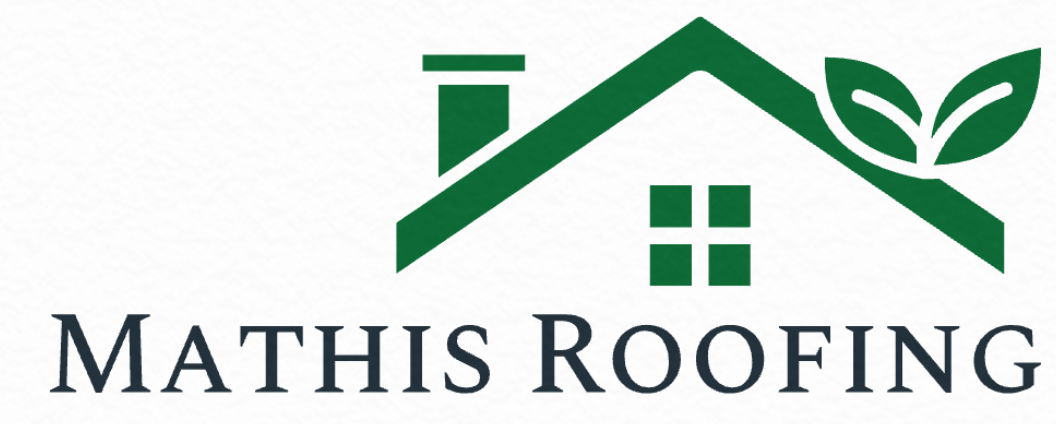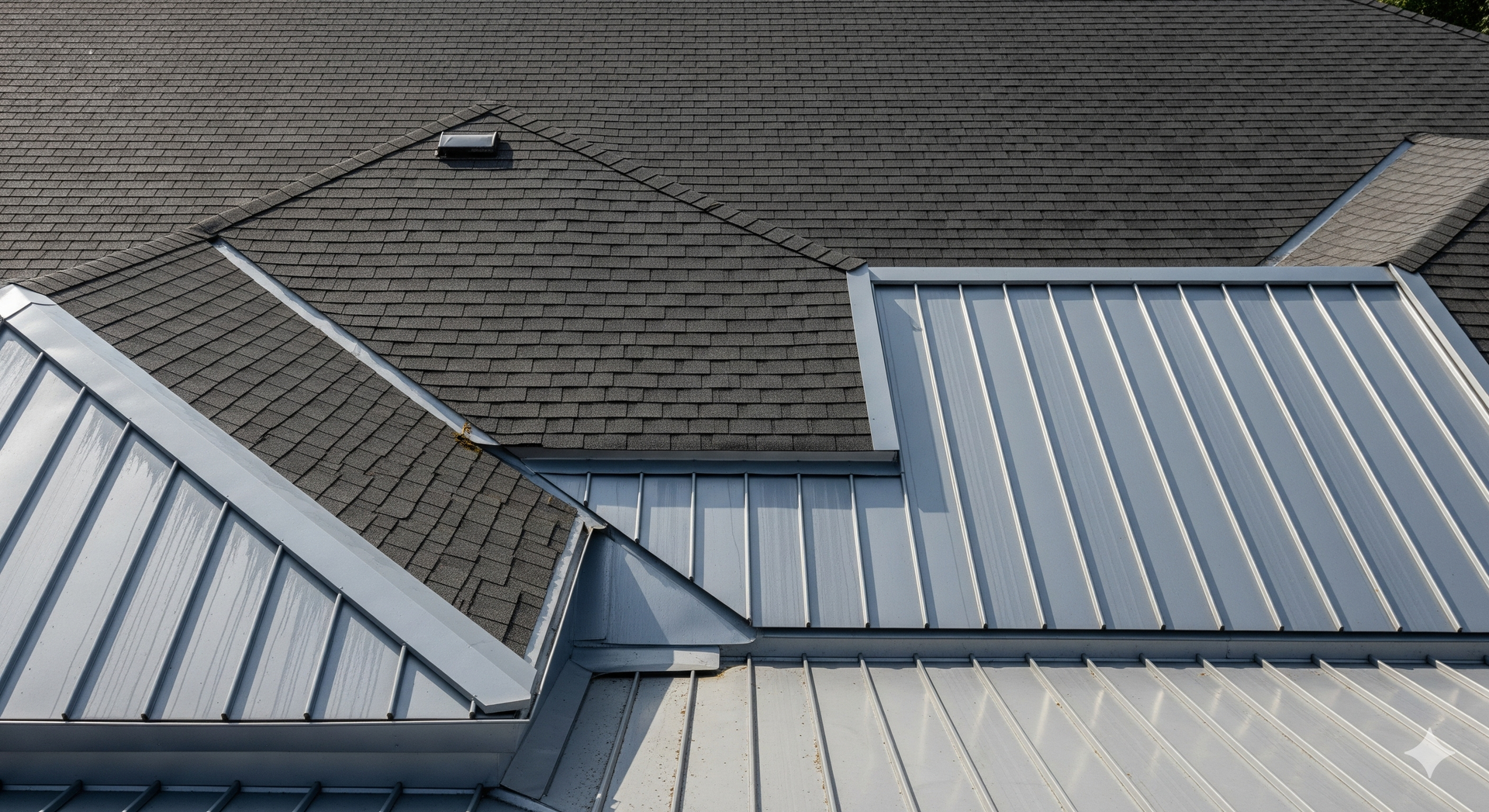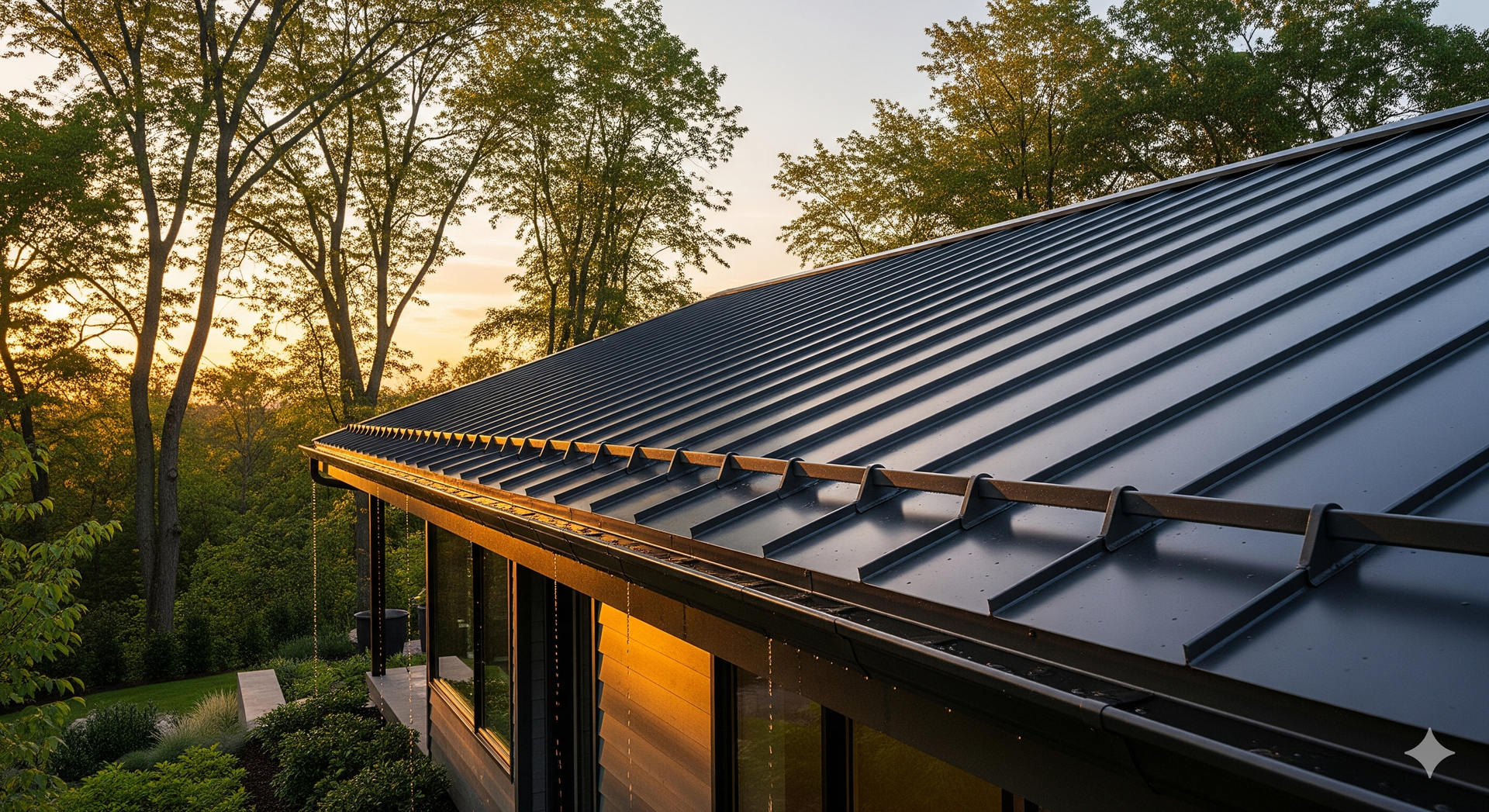Top 7 Signs Your Brevard Home Needs a Roof Inspection Now
If you’re spotting missing or cracked shingles, water stains on ceilings, or granules clogging your gutters, it’s time to get that roof checked. A sagging spot or moss growing on your roof means trouble lurking, too. Plus, if your energy bills suddenly spike or your roof’s been around a while, don’t ignore it—these signs show your roof needs some TLC. Stick around, and you’ll uncover even more signs to watch for in our service areas.
Key Takeaways
- Missing, cracked, or curling shingles indicate immediate need for a roof inspection to prevent leaks and further damage.
- Water stains on ceilings or walls suggest roof leaks requiring prompt assessment to avoid mold and structural harm.
- Granules collecting in gutters signal shingle wear and the need for roof evaluation to maintain protective layers.
- Sagging roof deck points to potential structural issues and warrants professional inspection for safety and repair.
- Sudden increases in energy bills may indicate roof inefficiency or hidden damage needing inspection to improve energy conservation.
Missing or Damaged Shingles
Even if your roof looks fine from the ground, you might be surprised by how many shingles are missing or damaged once you take a closer look. When those shingles start to curl, crack, or just go MIA, it’s a red flag waving at you. You’re not alone—lots of homeowners miss this until it’s pretty obvious. Catching shingle damage early means you can schedule some simple roof repair before things get worse. If you ignore it, you might end up facing a full roof replacement, which is a much bigger hassle and expense. Think of your roof like a good friendship—it needs care and attention to stay strong. So, don’t wait until the leaks start showing up. Grab a ladder, or better yet, call a pro to inspect and keep your roof in tip-top shape. That way, you’ll keep your home cozy and your wallet happy.
Water Stains on Ceilings or Walls
If you spot water stains on your ceilings or walls, don’t just shrug them off—they’re often a sneaky sign of a roof leak. These stains can lead to mold and mildew, which nobody wants crashing the party in your home. Catching these early helps you stop damage before it turns into a costly headache. If the leak’s urgent, calling for emergency roof services can prevent further damage and save your ceilings and walls from more trouble.
Identifying Water Stain Sources
Sometimes, a water stain on your ceiling or wall can feel like a mystery waiting to be solved. You might wonder where that pesky mark came from, right? Well, figuring out the water stain origins is key. It’s not always as simple as a leaky roof—sometimes, it’s hidden moisture sneaking in from other spots. You’ll want to start with moisture detection, checking for damp patches or peeling paint nearby. Grab a flashlight and get curious; often, stains have telltale signs like discoloration or a musty smell.
Mold and Mildew Risks
While water stains might seem like just an annoying spot on your ceiling or wall, they can actually invite some uninvited guests—mold and mildew. These pesky critters thrive in damp spots, leading to mold growth that can affect your home's air quality and your family's health. Catching these signs early helps with mildew prevention and keeps your space comfy and safe. In some cases, especially with aging or porous materials, switching to a more durable option like metal roofing can offer long-term protection against leaks and water damage.
| Spot Type | What It Means |
|---|---|
| Yellowish Stains | Possible leak source |
| Dark Patches | Active mold growth |
| Musty Smell | Mildew lurking nearby |
| Peeling Paint | Moisture problem |
| Soft Ceiling Tiles | Serious water damage |
Preventing Structural Damage
Since water stains on your ceilings or walls can be more than just an eyesore, you’ll want to tackle them before they cause serious damage. Those pesky spots often signal leaks that threaten your home’s structural integrity. Ignoring them is like letting a tiny crack turn into a full-blown problem—nobody wants that! Acting quickly helps keep repair timelines short and costs down, making your life easier. Plus, staying on top of it means your home stays safe and cozy for everyone inside. Think of it as giving your house a little TLC before things get messy.
Granules in Gutters
Finding granules in your gutters can feel like discovering tiny clues left behind by your roof. These little bits aren’t just debris; they’re signs your shingles are losing their protective layer. When granule buildup starts clogging your gutters, it’s time to pay attention. Neglecting gutter maintenance can lead to water damage, and nobody wants that drama! Keeping an eye on those granules helps you catch roof wear early and join the savvy group of homeowners who protect their homes smartly.
Here’s a quick look at what granule buildup means for you:
| Granule Amount | Gutter Condition | Recommended Action |
|---|---|---|
| Light | Clean, free flowing | Routine maintenance |
| Moderate | Slight clogging | Clear gutters, inspect roof |
| Heavy | Blocked, water pooling | Immediate roof inspection |
| None | Pristine | Keep up regular checks |
Sagging Roof Deck
If your gutters are telling you stories with granules, your roof deck might be sending out some signals too—like a sag that’s hard to ignore. When you spot a sagging roof deck, don’t brush it off as just a quirky wrinkle. That dip means your roof’s structural integrity could be at risk, and that’s no small thing. It’s like the roof is trying to tell you it needs a little help holding itself up. You want your home to feel safe and solid, right? A sagging spot might mean water damage, rot, or even weakened support beams hiding up there. Catching it early with a roof inspection can save you from bigger headaches—and wallet aches—down the road. So, if you notice some sagging, you’re definitely not alone, and it’s time to get those pros up on the roof to check things out.
Increased Energy Bills
Why does your energy bill suddenly look like it’s training for a marathon? If you’ve noticed a jump in those numbers without a change in your routine, your roof might be the sneaky culprit. When your roof isn’t sealing in your home’s temperature properly, it messes with your energy efficiency. That means your heater or AC has to work overtime, pushing your utility costs through the roof—pun intended! You’re not alone; many homeowners in Brevard find themselves scratching their heads over rising bills, only to discover a roof inspection reveals hidden leaks or worn-out insulation. Getting ahead of this can save your wallet and keep your home cozy. So, if your energy bills are climbing and you can’t figure out why, it’s time to call in a pro. A quick checkup could uncover issues that, once fixed, will have your energy costs sprinting back down to normal.
Visible Mold or Moss Growth
Moss and mold love hanging out on your roof like uninvited guests at a backyard party. When you spot green moss patches or black mold spots, it's a clear sign your roof needs a quick inspection. These pesky growths hold moisture, which can damage shingles and lead to leaks. Plus, they make your home look tired, not the cozy nest you want.
Here’s a quick look at why you shouldn’t ignore them:
| Issue | Why It Matters | What You Can Do |
|---|---|---|
| Mold Growth | Harms shingles & health | Schedule mold prevention |
| Moss Accumulation | Traps water, causes rot | Call for moss removal |
| Appearance | Lowers curb appeal | Clean and inspect roof |
Age of the Roof
You’ve probably heard that roofs don’t last forever, and that’s true—different materials have their own lifespans, so knowing how old yours is can save you from surprises. Check for signs like cracked shingles or curling edges, which usually mean your roof’s been around the block a few times. If you’re lucky enough to have maintenance records, they’re like a roof’s report card and can help you figure out when it might be time for an upgrade.
Roofing Material Lifespan
Every roof has its own "expiration date," and knowing yours can save you a lot of headaches down the road. Different roofing material types wear out at different rates, so understanding the lifespan factors is key. Here’s a quick rundown:
- Asphalt shingles usually last 15-30 years, depending on quality and weather.
- Metal roofs can hang tough for 40-70 years but watch for rust or dents.
- Tile and slate roofs? They’re the veterans, often lasting 50+ years if maintained.
Keep in mind, things like sun exposure, storms, and
maintenance habits all tweak these numbers. So, if your roof’s clock is ticking close to these ranges, it’s a good time to
schedule an inspection. Your neighborhood crew’s got your back to keep your home
cozy and dry!
Visible Aging Signs
Knowing your roof’s age is a good start, but spotting visible signs of wear can tell you even more. When roofing materials start curling, cracking, or losing granules, it’s a clear hint that your roof is waving a little white flag. Don’t ignore those dark streaks or patches of moss—they’re like nature’s way of saying, “Hey, check this out!” The key is to keep up with inspection frequency recommended for your roofing type, so you catch problems before they throw a party you didn’t invite them to. Think of it like catching a cold early—you want to nip it in the bud. Staying on top of these visible aging signs not only protects your home but keeps you part of a community that values smart care and cozy roofs.
Historical Maintenance Records
Digging into your roof’s historical maintenance records is like opening a treasure chest of clues about its health and age. When you check your roofing history, you get a clearer picture of how well your roof has been cared for over the years.
Here’s what to look for:
- Maintenance schedule consistency – Regular inspections and repairs show you’re keeping up with wear and tear.
- Past issues and fixes – Knowing what problems popped up before helps you spot recurring trouble.
- Roof age documentation – This tells you when it was installed and when it might be time for a replacement.
Frequently Asked Questions
How Often Should I Schedule a Professional Roof Inspection?
You should schedule routine maintenance every year to keep your roof in top shape. Adjust your inspection frequency if you notice damage or after severe storms, so you stay part of the community that values a safe, sound home.
Can Severe Weather Affect My Roof Warranty?
Wondering if severe storms could ruin your roof warranty? They can! Weather impacts like hail or wind damage might void coverage if you don’t act quickly. Stay proactive, protect your home, and keep your warranty intact.
What Materials Are Best for Brevard’S Climate?
Describe the item or answer the question so that site visitors who are interested get more information. You can emphasize this text with bullets, italics or bold, and add links.How Long Does a Typical Roof Inspection Take?
Like a quick check-up, your roof inspection usually takes about an hour, depending on roof types. You’ll appreciate the inspection benefits, like catching issues early, keeping your home safe and feeling part of a caring community.
Are Roof Repairs Covered by Homeowner's Insurance?
You’ll want to check your roof insurance policy carefully because coverage limits vary. While some repairs are covered, others might not be, so understanding your policy guarantees you’re protected and part of a knowledgeable homeowner community.
Final Thoughts
So, if you spot missing shingles, see water stains, or find granules in your gutters, don’t wait around. If your roof’s sagging, your energy bills are climbing, or moss is crashing the party, it’s time to act. And hey, if your roof’s getting up there in years, a quick check won’t hurt. Catching problems early saves you headaches later—think of it as giving your home a little TLC before things get messy.
Contact us to get started.


